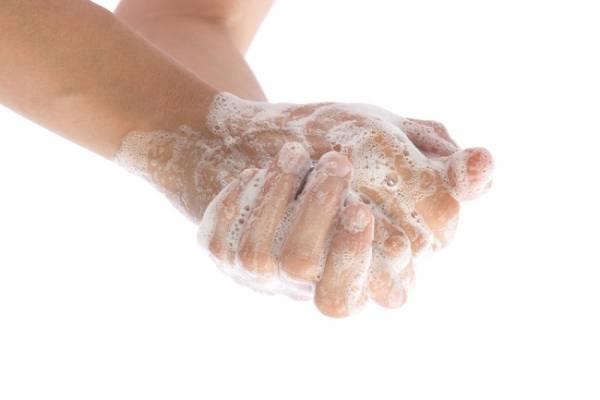Methicillin-resistant staphylococcus aureus (MRSA) and another new drug resistant bacterium, carbapenem-resistant klebsiella pneumoniae (CRKP), are quickly spreading in gyms, locker rooms, and athletic facilities. Staphylococcus aureus (staph) is a common bacterium that causes a wide range of illnesses, from mild skin infections to more serious systemic infections including, fatal bacteremia, necrotizing pneumonia, and necrotizing fasciitis. MRSA is a virulent staph infection that has a resistance to many different antibiotics which makes it extremely difficult to treat. An estimated 25% to 30% of the general population are colonized with staph, however less than 2% are colonized with the more dangerous MRSA. CRKP is much more dangerous and deadly than MRSA due to the fact that CRKP is resistant to almost all antibiotics available today. MRSA and CRKP can be found in hospital settings, inpatient communities, athletic facilities, gyms, locker rooms, daycare centers, facilities for soldiers, and tattoo shops. These infections spread very quickly in communal settings, causing infections that are very difficult to resolve and treat. Current statistics regarding the incidence of CRKP and MRSA are very difficult to assess. Before 2005 all data was indicating a high rise in MRSA infections and resulting deaths. However, a study in the Journal of American Medical Association, used the latest analysis from the CDC and found that rates of MRSA infections were down from 2005 to 2008. This study reported that MRSA infections dropped by almost 28% in hospitalized patients, and 17% in patients who were not hospitalized. It is important to note that this study assessed healthcare related transmissions only and not communal transmissions.
Athletes at Risk
Any full contact sport including wrestling, football, martial arts, professional MMA fighting, rugby and more, are considered risky due to the skin to skin contact. This skin to skin contact can take place on and off the court or field, many times an infection can occur in a common bathroom or locker room area. This skin to skin contact can also occur in a weightlifting room on a barbell, pull up bar, or kettlebell. MRSA infections have been reported in athletes of many different sports including soccer, basketball, field hockey, volleyball, rowing, yoga, and football.
Prevention Tip for Athletes
- Pack a gym bag with extra clothes, a plastic bag, flip flops for showering, your own personal toiletries, and towel.
- Frequently wash your hands thoroughly with soap and water and/or use an alcohol-based hand sanitizers that is at least 60% alcohol, as recommended by the CDC.
- Keep all cuts and scrapes clean and covered with a bandage until healed.
- Avoid all contact with other people’s sweat, blood, wounds, and bandages.
- Wipe down gym equipment before and after use and avoid sharing any personal items or towels.
- When possible, shower immediately after exercise or training and use your own toiletries and towels. If showering is not an option then change clothes and place workout gear in a separate plastic bag ready for immediate wash.
- Wash and dry all workout clothes after each session.
Tips for Proper Hand Hygiene
Hand washing is one of the most effective practices to reduce illnesses, bacteria, and MRSA transmission. The Association for Professionals in Infection Control and Epidemiology and the Mayo Clinic, have recommended very detailed hand washing protocols to eliminate germs and bacteria on hands.
- Wet your hands with running water and apply liquid pump soap. Lather your hands well by vigorously rubbing them together.
- Rub your hands together for at least 15 to 20 seconds.
- Inspect all surfaces of hands and nails including the back of your hands, wrists, between your fingers, and under your fingernails.
- Rinse hands well.
- Dry your hands using a disposable paper towel or air blower.
- Use a disposable paper towel to turn off the faucet and open bathroom door.
- If no hand washing facilities are available use an alcohol-based hand sanitizer, rubbing your hands together, covering all surfaces of your hands, including the back of your hands for at least 10 to 30 seconds.

The CDC has specific guidelines for gyms and athletic facilities to reduce the chance of MRSA infection and promote proper hygiene. Along with personal hygiene, cleaning commonly touched surfaces and areas that come into direct contact with skin, sweat, or blood is imperative. Any shared equipment that comes into direct skin contact should be disinfected after each use.
Easy Surface Disinfectant
Try this simple disinfectant in your garage gym or workout area.
Mix ¼ cup of household bleach in 1 gallon of water – for disinfection and wiping down commonly used gym surfaces.
*Please remember bleaches and disinfectants can be irritating to the lungs, skin, and eyes.






